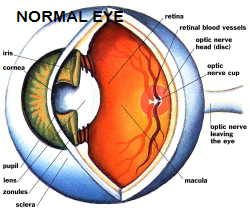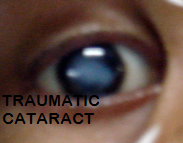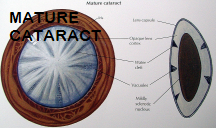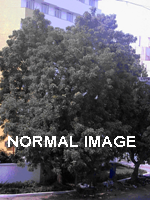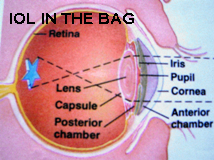Eyes can be compared to a camera, whereby,
the light rays enter through the lens and
an image is formed on the retina. To
produce a sharp image on the retina which
is the light sensitive layer of the eye,
the lens must remain clear. Aging produce
cloudiness of natural lens of the eye so
that light rays pass with difficulty and
vision becomes blurred.
The rate of cataract progression can be unpredictable. Some cataracts worsen significantly within a few weeks; others remain unchanged for many years. Painless blurring, glare/sensitivity from lamps or bright sunlight, or a halo around light resulting in poor night vision, difficulty in reading-print, double, multiple or cloudy vision, frequent changes in prescription for eyeglasses are common symptoms of cataract.
WHEN TO SEEK MEDICAL ADVICE ?
Surgery is the only effective way to remove a cataract
whereby the cloudy lens is removed. Enough visual loss
to interfere with patientís lively hood, recreation or
daily activities is an indication for cataract surgery.
It is not necessary a misconception to wait until the
cataract is ripe or mature. In fact at this point,
cataract may burst in the eye causing complications and
the surgery is technically more difficult. Detailed
examination of the eye after dilating the pupil and
assessment of the retina should be done. Preoperative
assessment regarding diseases like diabetes and high
blood pressure, respiratory problems, drug allergy,
heart problems etc. is must.
TREATMENT
Previously and even today in camps in developing countries of the world, intracapsular/ extracapsular method of cataract extraction having 10 mm of incision with 7-8 stitches is practiced. After the removal of cataract, the patients wore thick glasses.
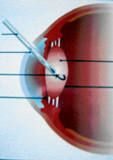
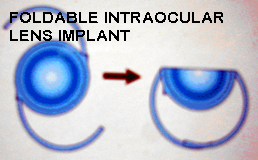
Nowadays, in Phacoemulsification,
through less than 3 mm incision,
with the help of ultrasonic waves
(Commonly misunderstood as Laser),
through titanium tip the
cataractous lens is emulsified,
sucked and an IOL made up of
PMMA/silicone material is placed
in the position previously occupied
by the cataract, usually under
local anesthesia. One or no stitch
is taken and because of the small
self-healing incision, visual
rehabilitation is very fast. After 3
weeks, refractive error, if there is
corrected and practically there is
no postoperative restriction on any
activity.
Economically it is slightly costlier then the routine procedure because of the special machine and special skill is required. Vision almost returns to normal and 95% patients may require thin glasses for distance or near vision. During the operation in few cases because of high intraocular pressure or other internal operative problems, sometimes IOL cannot be placed in contact lens may be a good alternative. The lens capsule, which is purposefully left in the eye to support the IOL, may become cloudy with passage of time causing blurred vision again. With the help of YAG laser a hole can be created in the capsule and clear vision can be restored. If the eye doesnít have any preexisting problems there is 95% opportunity for regaining nearly normal vision after cataract surgery.




